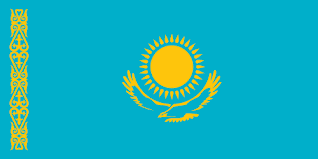SURGICAL TREATMENT OF LEGG-CALVE-PERTHES DISEASE IN CHILDREN
Introduction. Legg-Calve-Perthes disease is an idiopathic aseptic avascular osteonecrosis of the epiphysis of the femoral bone head. The age of diagnosis of the disease is usually between 4 and 12 years-old age, with an average of 6 years-old age. The course and prognosis of Perthes disease is difficult to predict. The prognosis of the disease depends on the age of the child, on the site of damage to the epiphysis of the femoral head, on the level of the destroyed height of the lateral column of the pineal gland.
Materials and methods. The study design is a prospective controlled clinical trial. From 2018 to 2022, 10 children with Legg-Calve-Perthes disease were operated on in our institution. Under general anesthesia, the patient underwent hardware unloading of the hip joint under X-ray control. The age of the patients ranged from 7 to 11 years-old, 9 cases were boys, 1 case was a girl and all cases were one-sided. The duration of treatment in the device ranged from 28 to 42 days. Radiologically, the severity of the disease and the indications for surgery were set according to the classifications of Salter-Thomson and Catterall.
Results The follow-up period ranged from 6 months to 4 years, with an average of 2 years. A total of 10 patients (9 boys and 1 girl) were enrolled in this study. The median age at symptom onset was 8.3 years-old (range 7–11 years-old) and the median age of having surgery was 9.1 years-old (range 7–11 years-old). Five cases are right-sided hip lesions, the remaining five are left-sided hip lesions. In the present study, there was not a single case of bilateral hip lesion. At the time of surgery, two patients had 2nd stage of the disease, eight patients had 3rd stage of the disease (20% in the second stage of the disease, 80% in the third stage). Distraction was performed over an average of 14 days (range 10-17 days). The median duration of AEF wearing was 34.6 days (range 28–48 days).
Conclusions. Hardware unloading of the hip joint is currently a promising treatment for Legg-Calve-Perthes disease, which has a future. This method of treatment has advantages such as simplicity of technique, minimal complication rate, short period of hospitalization, correction of shortening, since it increases the length of the limb, shorten the recovery time of the femoral head. Providing radiographic sphericity of the femoral head improves the range of motion of the hip joint.
Көрген адамдардың саны: 412
Мақалалар санаты:
Біртума зерттеу
Библиографиялық сілтемелер
Tuktiyeva N.A., Dossanov B.A., Zhunussov Ye.T. Abdulvakhabov G.M. Surgical treatment of legg-calve-perthes disease in children // Nauka i Zdravookhranenie [Science & Healthcare]. 2025. Vol.27 (3), pp. 135-142. doi 10.34689/SH.2025.27.3.015Ұқсас жариялымдар:
REPROGRAMMING EXPERIENCE OF BLOOD MONONUCLEAR CELLS INTO INDUCED PLURIPOTENT STEM CELLS (IPSCS) IN A PATIENT WITH CATECHOLAMINERGIC POLYMORPHIC VENTRICULAR TACHYCARDIA (CPVT)
CREATION OF THE PREGNANCY MICE MODEL TO STUDY THE EFFECT OF GLP-1/GIP AGONISTS
SATISFACTION WITH THE QUALITY OF PRIMARY CARE FOR PATIENTS WITH HYPERTENSION
EPIDEMIOLOGY, RESOURCE DISTRIBUTION, AND MANAGEMENT CHALLENGES OF CHRONIC HEART FAILURE IN KAZAKHSTAN: A NATIONAL RETROSPECTIVE ANALYSIS
PREVALENCE OF POLYMORPHISMS IN WARFARIN METABOLISM-RELATED GENES AMONG THE KAZAKH POPULATION
